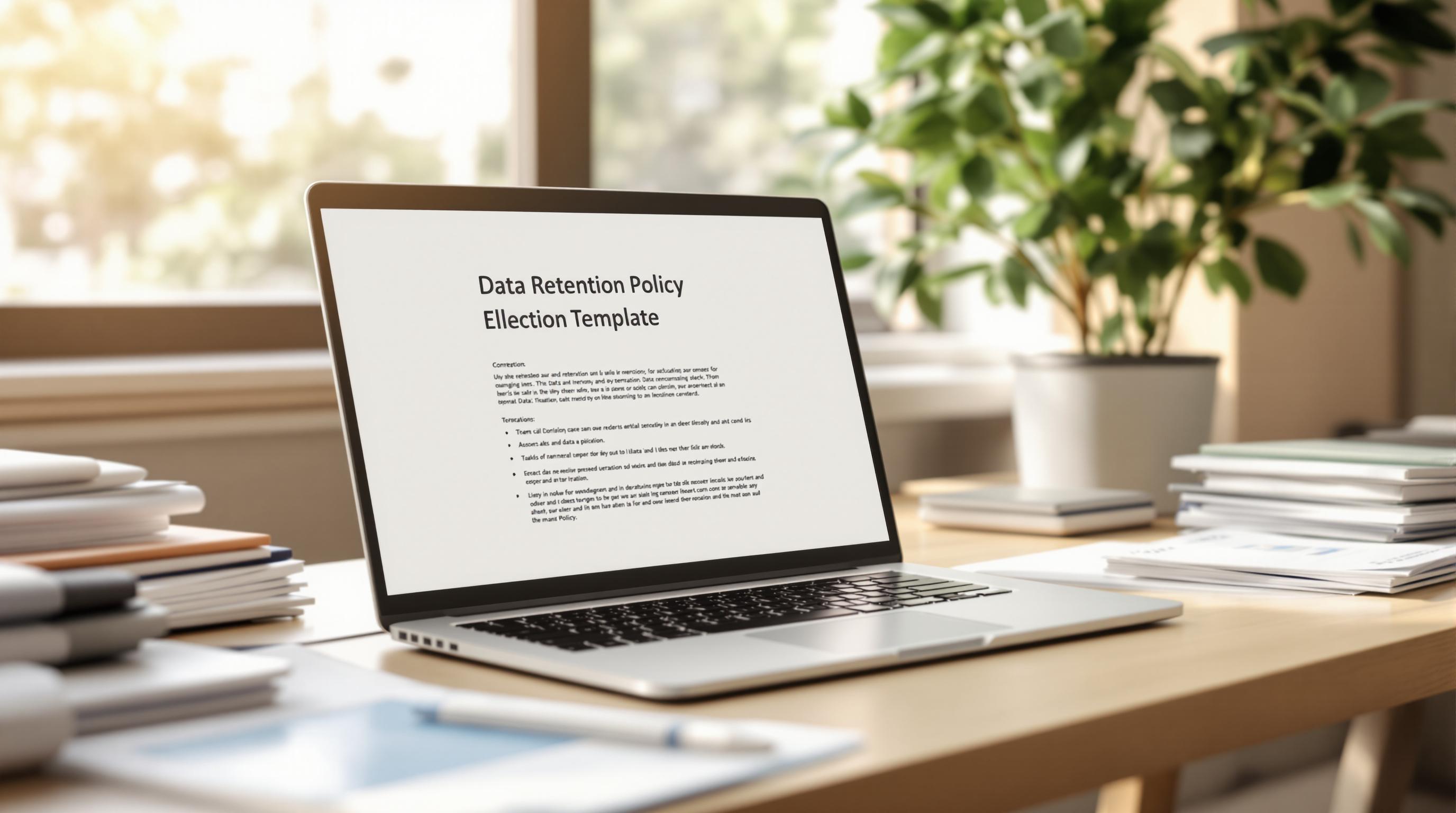AI incidents can lead to security breaches, ethical issues, and operational disruptions. Here's how to handle them effectively:
- Why It Matters: 41% of companies face AI-related security breaches. Costs of data breaches reached $4.45M in 2023.
- Key Risks: Model failures, data breaches, ethical issues, and workflow disruptions.
5 Steps to Respond to AI Incidents:
- Prepare: Train teams, set up monitoring tools.
- Detect & Analyze: Use systems to identify issues early.
- Contain: Isolate affected systems to limit damage.
- Recover: Fix root causes and restore operations.
- Review: Learn from incidents and improve processes.
Build Your Response Framework:
- Team Roles: AI engineers, security experts, legal advisors, PR specialists, project managers.
- Tools Needed: Performance monitoring, data quality checks, version control, security systems.
By following these steps and using automated tools, you can reduce detection time by 74% and cut costs by 30%. Stay proactive to minimize risks and ensure smooth recovery.
Applying Artificial Intelligence to the Incident Response Function
Building the Response Framework
Aligning teams, processes, and monitoring systems is key to creating an effective AI incident response framework. Organizations with well-structured response plans can cut incident costs by 30% [9].
Creating the Response Team
An AI incident response team needs a mix of skills to tackle complex issues. Here's a breakdown of the core roles and their responsibilities:
| Role | Primary Responsibilities | Key Skills |
|---|---|---|
| AI/ML Engineers | Diagnose and fix model issues | Troubleshooting, model optimization |
| Security Experts | Contain threats, ensure system integrity | Cybersecurity, risk assessment |
| Legal Advisors | Handle compliance and liability | AI regulations, data protection laws |
| Communications Specialists | Manage updates and public relations | Crisis communication, technical writing |
| Project Managers | Coordinate response efforts | Leadership, cross-team coordination |
Interestingly, 62% of organizations report gaps in AI expertise within their response teams [9]. This structure lays the groundwork for the preparation phase outlined in the 5-stage response model.
Developing Response Plans
Response plans should adapt to different levels of incident severity but remain clear and actionable. Key elements of these plans include:
- Incident Classification Matrix: Define severity levels and prioritize responses.
- Communication Protocols: Set up escalation paths and ensure stakeholders are promptly informed.
- Recovery Procedures: Focus on restoring system integrity while minimizing downtime.
- Documentation Standards: Clearly outline how incidents should be logged and reported.
These components ensure a structured, efficient response to any AI-related issue.
Setting Up Monitoring Systems
Monitoring systems are crucial for catching issues early. Here’s a look at the essential tools:
| System Type | Purpose | Example Use |
|---|---|---|
| Performance Monitoring | Check model accuracy and efficiency | Track performance metrics |
| Data Quality Tools | Spot data drift and anomalies | Visualize input anomalies |
| Version Control | Manage changes to models and datasets | Track model versions |
| Security Monitoring | Detect threats and vulnerabilities | Use tools like IBM Watson for threat detection |
Routine audits and continuous monitoring help catch problems before they escalate, drawing lessons from past high-profile failures [4][8]. These systems form the backbone of a proactive incident management strategy.
Real-Time Incident Detection
Automated systems are crucial in catching AI-related issues early. In fact, they prevent 53% of incidents by keeping a close watch on model performance, data quality, and system health [1].
Automated Alert Systems
By building on existing monitoring tools, automated alerts track key performance metrics, data quality, and system health indicators. For example, Microsoft Azure managed to cut detection time in half by using predictive analytics [3].
Incident Priority System
An effective priority system ensures teams address the most pressing issues first. Google's Site Reliability Engineering framework offers a solid example for organizing incidents [1]:
| Priority Level | Impact Description | Response Time | Example Scenario |
|---|---|---|---|
| P1 (Critical) | System-wide failure | 15 minutes | Complete model outage |
| P2 (High) | Major functionality affected | 1 hour | Significant accuracy drop |
| P3 (Medium) | Limited impact | 4 hours | Minor performance issues |
| P4 (Low) | Minimal disruption | 24 hours | Small interface errors |
Organizations that adopt structured priority systems report a 35% boost in response times [6]. This framework helps response teams act quickly and efficiently based on their defined roles.
Data Collection for Analysis
Netflix has developed a system that automatically gathers logs, input samples, model outputs, and performance metrics during incidents [2]. This aligns with best practices for incident documentation.
Similarly, LinkedIn connects technical metrics with business outcomes like user engagement [5].
"Organizations with robust data collection processes can reduce detection and containment time by up to 74% through faster analysis and pattern recognition" [10].
sbb-itb-bec6a7e
Response and Recovery Steps
Once detection protocols are in place, the next move is to focus on containment and recovery to minimize damage and restore functionality.
Incident Containment Steps
Quick action is key to limiting the impact of AI-related incidents. Here's what to do:
- System Isolation: Disconnect any affected AI systems from the network immediately.
- Evidence Preservation: Secure system logs, model outputs, and other relevant data before making any changes.
- Backup Activation: Switch to pre-configured fallback systems to maintain operations.
Finding and Fixing Root Causes
To address the underlying issue, conduct a thorough root cause analysis using these methods:
- Apply the '5 Whys' technique to dig deeper into the problem.
- Verify the quality of the data used by the AI system.
- Review the model's code for errors or vulnerabilities.
- Check infrastructure dependencies for misconfigurations or failures.
Testing System Recovery
Testing recovery is crucial to ensure the system is fully operational. A solid test plan should cover:
- Benchmarks to confirm functionality.
- Data integrity checks to ensure no corruption or loss.
- System integration tests to verify compatibility with other systems.
- Load testing to assess performance under stress.
- Security validations to confirm the system is safe from vulnerabilities.
For teams with limited resources, platforms like AI for Businesses offer tools to automate these recovery tests, making the process more manageable.
Learning from Incidents
A strong recovery process not only addresses immediate issues but also builds resilience by ensuring lessons are learned systematically. According to Gartner's 2023 survey, only 54% of organizations have formal incident review processes. However, those that do experience a 37% drop in repeat incidents within the first year [7].
Incident Review Process
A structured approach to analyzing incidents helps prevent them from recurring. Organizations with formal review processes see fewer repeat incidents, as shown by a 37% reduction [7]. Key steps in this process include:
- Reconstructing a detailed timeline of the incident
- Assessing the impact on all affected systems
- Evaluating how effective the response was
- Gathering feedback from stakeholders
Microsoft's incident review framework highlights the importance of tracking specific metrics to measure response effectiveness:
| Metric | Description | Purpose |
|---|---|---|
| Mean Time to Detect (MTTD) | Time from when an incident occurs to when it's detected | Measures detection speed |
| Mean Time to Respond (MTTR) | Time from detection to containment | Assesses response speed |
| Resolution Rate | Percentage of incidents resolved within target timeframes | Evaluates team performance |
| Customer Impact | Number of affected users and duration of service disruption | Gauges business impact |
Improving Safety Measures
Meta, after a 2021 outage, introduced AI-focused 'storm drills' to simulate failure scenarios, enhancing their recovery testing protocols [2]. Effective safety improvements often involve:
- Gradual implementation with close monitoring
- Thorough validation before deployment
- Training for AI failure scenarios
- Regular reviews based on performance metrics
AI Tools for Response Management
AI tools are increasingly valuable in managing incidents, complementing traditional monitoring systems with predictive capabilities. Platforms like AI for Businesses use automation to optimize response efforts. These tools enhance incident management by:
- Automating routine detection tasks
- Identifying patterns to predict potential problems
- Simplifying and organizing response workflows
Summary and Next Steps
Now that detection protocols and recovery workflows are in place, it's time to focus on implementation. Here's how to prioritize your next steps:
-
Deploy Monitoring Tools
Use AI-driven tools like Darktrace for spotting anomalies and Splunk's security automation platform to streamline detection and analysis. These tools improve your ability to identify potential threats quickly. -
Define Response Protocols
Develop response plans tailored to the severity levels you’ve outlined. Key components to include:Response Component Details Detection Systems Automated alerts, AI-based anomaly detection Containment Procedures Isolation measures, backup systems Recovery Process System restoration, validation checks Communication Plan Stakeholder updates, pre-prepared PR templates Documentation Incident logs, lessons learned -
Test and Train Regularly
Build on the methods discussed in the 'Testing System Recovery' section to expand your recovery drills. Regular training ensures your team stays prepared for emerging AI-related threats.
Keep in mind, response plans should evolve over time. Regularly review and update them, integrating ethical review processes in line with the Risk Categories from the Introduction. Strive for clear documentation while balancing quick response actions with responsible AI management.


